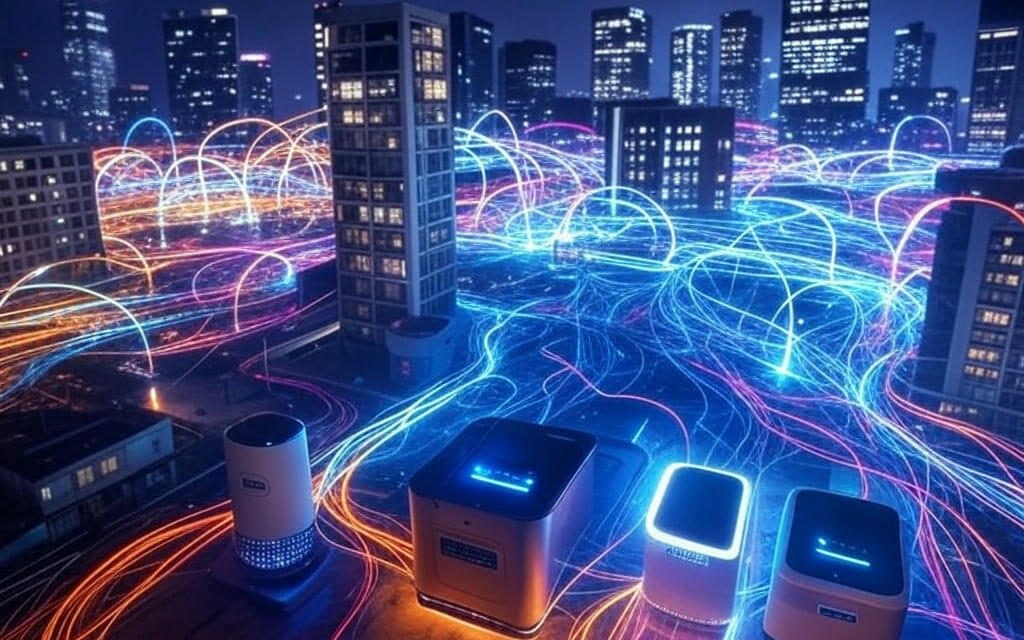IoT in smart environments is transforming industries—imagine devices in your home talking to factory machines, all connected for efficiency without effort. These iot smart environments offer 3 key benefits for tech leaders and decision-makers, enhancing automation. This guide explores how IoT links devices in smart homes, offices, and factories, with real-world applications and technical basics for business and technical minds.
Whether you’re a business leader seeking innovation or a tech manager building smarter setups, iot smart environments provide the connectivity you need. We’ll uncover how IoT drives automation efficiency, why it matters, and how it connects across environments. Ready to dive into iot smart environments? Let’s start with the basics and see how they power smart automation (0.1.1). It’s simple, engaging, and built for you—stick around!
IoT in Smart Environments Unveiled
0.1.1: Core Concepts of Smart Automation Systems
IoT in smart environments starts with core concepts—devices connecting via networks to automate tasks. Think your thermostat syncing with lights, all part of iot smart environments. Sensors detect motion, or schedules manage energy, forming automation’s foundation.
These basics are easy to grasp, even for tech leaders. They link homes, offices, and factories, boosting efficiency. Curious about iot smart environments’ building blocks? Check 0.1.1. It’s key to understanding modern systems.
0.1.2: Historical Evolution of Smart Automation
IoT’s role in smart environments evolved from early networks to today’s connected tech. It started with factory sensors, grew to home devices, and now integrates iot smart environments across industries. This history shapes modern automation.
For tech leaders, this progression reveals innovation patterns. Interdisciplinary advances—IT, engineering—drove iot smart environments forward. Want the timeline? See 0.1.2. It’s a journey worth exploring.
0.1.4: Device Connectivity in Smart Environments
IoT in smart environments relies on device connectivity—Wi-Fi, Bluetooth, or satellites linking gadgets. This network lets your smart doorbell alert your phone or a factory machine sync with sensors, all within iot smart environments.
For decision-makers, this connectivity drives efficiency. Homes, offices, and factories benefit from seamless links. Curious how iot smart environments connect devices? Dive into 0.1.4. It’s crucial for tech leaders.
0.1.5: Efficiency Solutions via IoT in Smart Environments
IoT in smart environments boosts efficiency—automating lights, predicting maintenance, or optimizing energy use. These solutions save time and costs, powered by iot smart environments across homes and industries.
For tech leaders, this efficiency is transformative. Homes, offices, and factories thrive with iot smart environments. Curious about savings? Explore 0.1.5. It’s a game-changer for decision-makers.
Conclusion
IoT in smart environments offers 3 key benefits, providing tech leaders a roadmap for efficiency. We’ve uncovered core concepts (0.1.1), history (0.1.2), device connectivity (0.1.4), and efficiency solutions (0.1.5) powering smart automation. They connect homes, offices, and factories, driving innovation for business and technical minds.
For decision-makers, iot smart environments simplify strategy—start with a smart plug at home (1.1) or scale for offices (2.0). Dive deeper into smart automation’s tech (0.2) or global views (0.6). These systems shift how we work—jump in, plan big, or explore more. IoT in smart environments’ future is here—seize it!
IoT in Smart Environments Questions
What are iot smart environments? They’re networks where IoT connects devices—like homes syncing lights with thermostats—to automate tasks. They boost efficiency for tech leaders and businesses (0.1.1).
How did iot smart environments evolve? They started with factory sensors, grew to home tech, and now link industries. This history shapes today’s iot smart environments for decision-makers (0.1.2).
Why does device connectivity matter in iot smart environments? It links gadgets via Wi-Fi or Bluetooth, enabling seamless automation. This connectivity drives efficiency for homes, offices, and factories (0.1.4).
How do iot smart environments save time and costs? They automate tasks—lights, maintenance, energy—reducing expenses. These solutions transform operations for tech leaders (0.1.5).
Explore More
Want more? Check these out: 0.1.1: Core Concepts of Smart Automation Systems dives deeper into basics. 1.1: Residential Automation Systems offers home insights. These build on iot smart environments—jump in!



